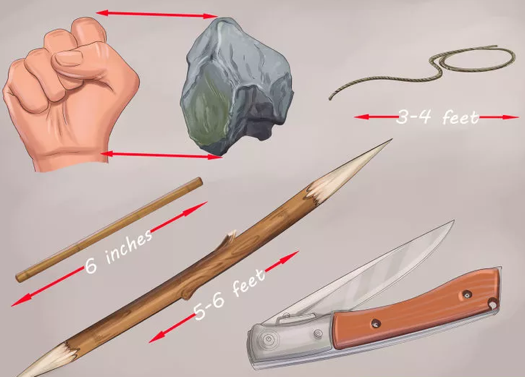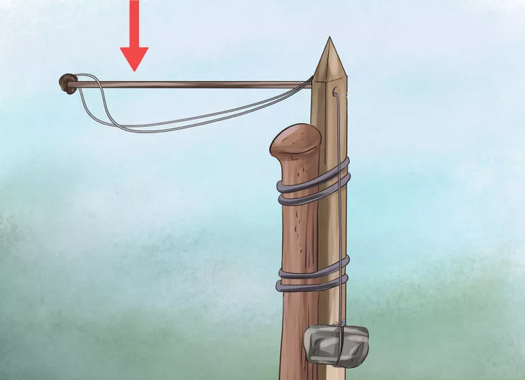How to Make a Simple and Effective Bird Trap
Trapping birds can almost be as easy as trying to shoot them, and a good trap is not that difficult to make. All you need is some basic material along with a bit of ingenuity, and you can develop a system that can provide an additional option in terms of catching prey for your next meal. Take a look at the following example, and see how you can put it to work for you in the field.
L Trap
This trap resembles an upside down “L” that has been used effectively since prehistoric times. All you need is a rock about the size of your fist, a 5-6 foot long stick, a 6” long branch that is about as thin as a pencil, 3-4 feet of cordage and a knife.
The first step is to whittle down both ends of the longer branch into sharp points. Ideally, the branch should be at least two inches in diameter. This will give the trap some strength in addition to allowing you plenty of room to assemble other components to it later on. One end will be used to anchor the pole into the ground whereas the other point will prevent birds from perching on it instead of the trap.
The next step is to drill a hole into the pole near the top, but below where it tapers into the point. The hole doesn’t need to be that wide, but it needs to extend all the way through the stick. The trick is to make the hole big enough to loosely hold the small branch. This will allow the stick to easily detach once a bird perches on it later.
Rigging the String
Next, tie your cordage around the rock and secure it with a knot. Then, you want to take the small stick, along with the other end of the string and feed it through the hole. This is where things get dicey. You want to tie a knot about a foot from the end of the string to provide a little bit of resistance to hold it in place as the weight of the rock tries to pull it out.
You also want to use the small stick as a support for the string as well. However, you don’t want the string to catch on the hole or stick and prevent it from slipping out of the hole once the bird perches on the trap. This will definitely involve some experimentation until you get a feel for how this system works.
The next step is to make a slip-knot that will serve as a noose. You want the noose knot to rest against the pole. You want the noose itself to rest against the end of the small stick that serves as the perch once the trap is assembled. You want to position the rope so that it dangles slightly beneath the perch, and you may want to loosely wrap it in a couple of places around the perch as well.
The finished product should have the rock dangling along the side of the support pole, and the noose rope loosely attached to the perch. Once the bird rests on the perch, it should fall out or lean down on an angle while the rock pulls the rope tight. The rope will trap the feet of the bird and prevent it from escaping.
Try this trap for yourself, and you may be surprised at how many birds will fall for this trick. The only real drawback to this trap is that it will catch small as well as large birds. Consequently, you may need to catch more than one bird to get a good-sized meal. However, they are easy to make, and you can put together more than one in order to make the best use of this system. In any case, this is a great way to enhance your hunting options during a survival situation when you can use all the help that you can get.




